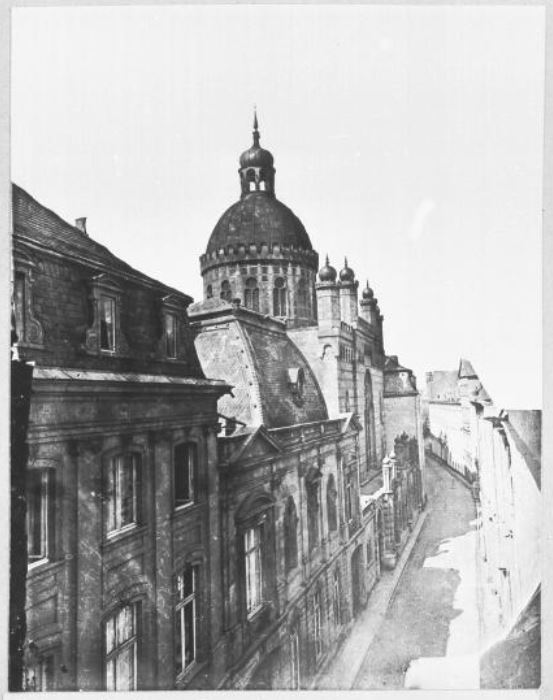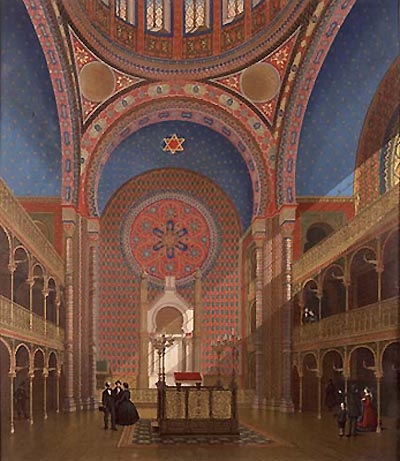After their expulsion from Cologne in 1424, Jews were not permitted to resettle in the cathedral city until 1798. After being readmitted, they founded a congregation and used the premises of the former convent of the Order of Saint Clare on Glockengasse. A steadily growing number of members led to the planning of a new place of worship, which was financed by Abraham von Oppenheim. The design of the new building, which was inaugurated in 1861, was by the master builder of the Cologne Cathedral, Ernst Friedrich Zwirner.
Zwirner designed the synagogue using Moorish forms, in the style prevailing at that time for synagogues. Both reform and orthodox communities had drawn on the Moorish style for their synagogues. In doing so, the latter pursued a clear distinction from Christian houses of worship. In contrast, the reform congregations demonstrated with the use of Moorish forms their renunciation of the reconstruction of the Temple in Jerusalem, which was reconstructed in the Arabic style in the nineteenth century. Zwirner’s building was considered one of the most beautiful synagogues of the nineteenth century, in which the self-confidence of the Jewish community was also expressed.
During the November pogrom, the building was set on fire and destroyed as a result of the non-intervention of the fire department. The Catholic priest Gustav Meinertz rescued a Torah scroll from the burning synagogue. This was returned to the Jewish community after restoration in 2007.
There is nothing left to be seen of the synagogue—the foundations are probably preserved beneath what is now Offenbachplatz.


Timeline Cologne
- ↑ The Synagogue on Roonstraße – March 22, 1899
- ↓ The Offenbach Hagadah – April 15, 1838
